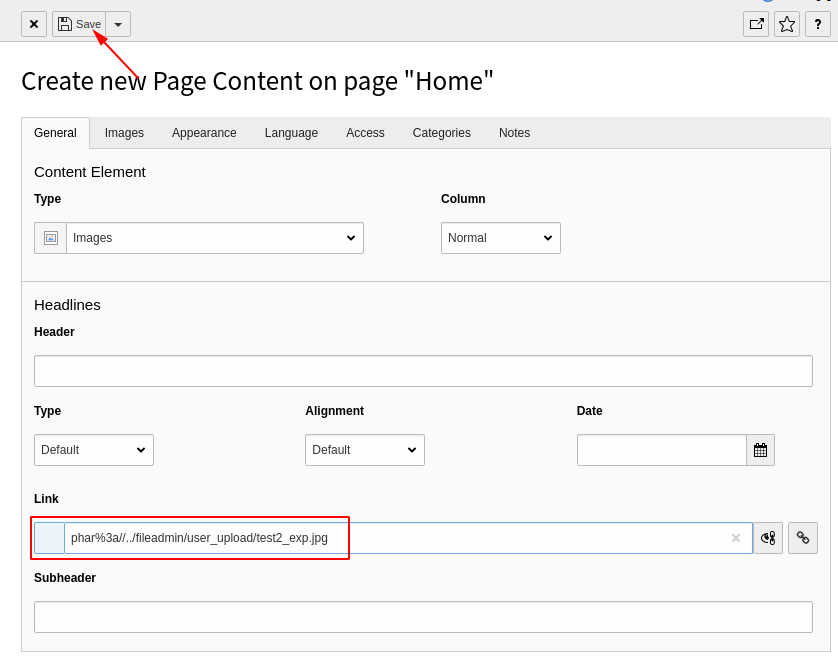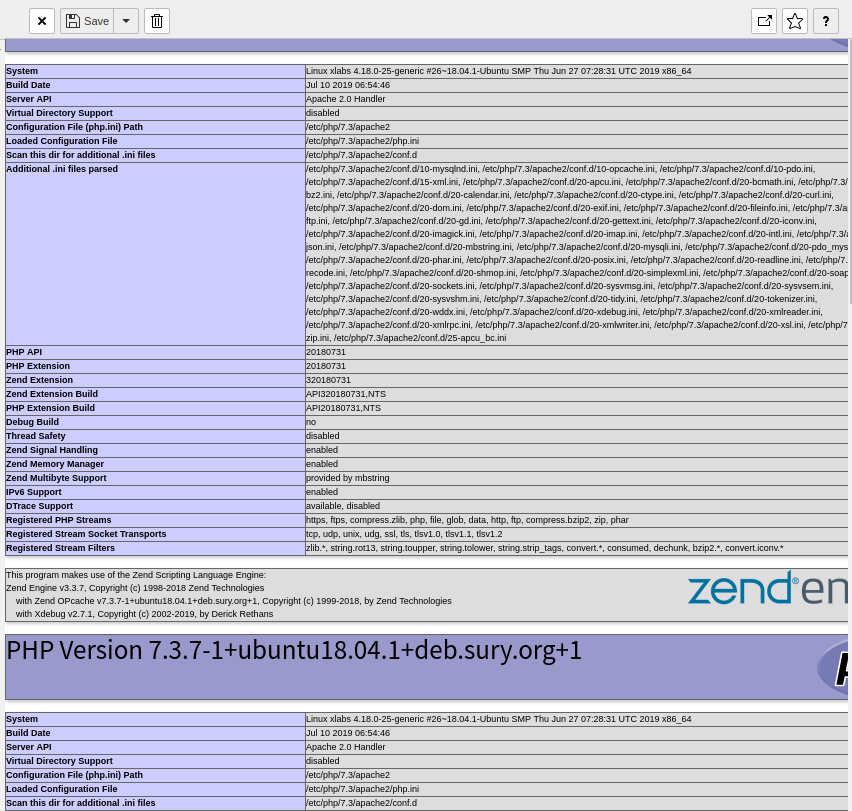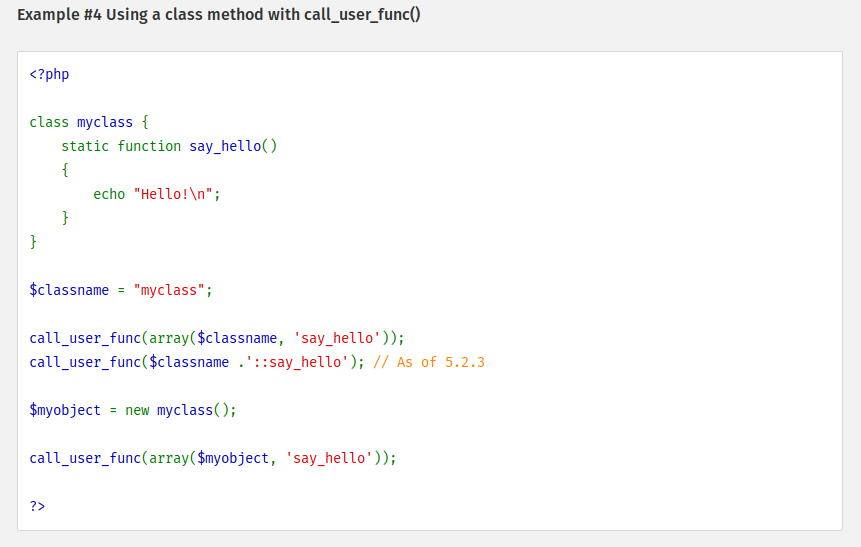这个漏洞的原因在于对phar文件的过滤不严,导致可以远程代码执行。这里涉及到phar的反序列化,具体参见 Sam Thomas 关于phar unserialize的文章。
本地搭建了两个基于Ubuntu 18.04.2 LTS的测试环境,TYPO3 8.7.16+PHP PHP 7.0.33和TYPO3 9.3.0+7.3.7。该漏洞的触发需要一个有效的后台用户。
这里有一个问题需要知晓,assert函数在PHP7.2之后的定义与之前版本略有不同。
1 | assert ( mixed $assertion [, string $description ] ) : bool |
php manual中有一段话:
1 | Warning |
这在编写POC的时候,需要避免在PHP7.3中使用assert来执行代码。
PHP7.3.7中执行phpinfo使用的poc如下:
1 |
|
好了,现在开始进行漏洞分析。
TYPO3中存在漏洞的代码在typo3/sysext/core/Classes/Database/SoftReferenceIndex.php的getTypoLinkParts()方法

上面说到存在风险的文件操作函数,其中就包括file_exists(),当传给file_exists()的参数是phar压缩文档并通过phar://伪协议解析时,就会反序列化其中的metadata数据,一旦该数据被控制,就会形成漏洞。
我们可以构造$splitLinkParam参数为phar文件,其中包含恶意代码,传递给file_exists()函数,便会触发漏洞。
在这里,利用phpggc来构造POP链。TYPO3中包含类FnStream,所以可以利用phpggc中的guzzle/rce1载荷将数据写入一张图片中。

然后上传这个附件,接着创建一个页面,将 Link 设置为phar://,注意需要将:转义

保存后就会触发漏洞

漏洞复现完毕。
最后说一下phpggc中该POP调用链。
在PHPGGC中,pop链在gadgets.php文件中,pop链的逻辑和描述在chain.php文件中chain.php
1 |
|
从其中可以看到其对使用该组件的描述,要求GuzzleHttp\Psr7的版本要小于1.5.0,具体的逻辑在generate成员方法中,其中入口参数为数组parameters,其包括function和parameter两个参数,分别为要进行rce的函数和函数的参数,其返回的即是\GuzzleHttp\Psr7\FnStream的匿名对象,其入口参数为一个数组,数组包括一个数组元素,键名为close,键值为一个数组,包括\GuzzleHttp\HandlerStack匿名对象,以及resolve字符串,至此构造序列化对象的逻辑结束,接下来结合gadgets.php看一下整个链是如何连起来的:
gadgets.php
1 |
|
在类HandlerStack的构造方法中传入了rce要使用的函数及参数,并赋值给$this->stack和$this->handler,然后在类FnStream的构造方法中传入包含键close的数组,此时将会拼接出:_fn_close=[new\GuzzleHttp\HandlerStack($function, $parameter),'resolve']_fn_close的第一个元素其实已经实例化为一个匿名对象了,这里为了好理解先写成实例化前的形式。然后在FnStream的__destruct()函数中将会调用$this->_fn_close,即构成:call_user_func([new \GuzzleHttp\HandlerStack($function, $parameter),'resolve'])
以上这种调用的形式在php官方文档中存在此种调用类中方法的形式:

所以此时关注类HandlerStack的resolve方法,其中将利用php的动态函数的性质来构成rce的函数调用,比如此时假设:[new \GuzzleHttp\HandlerStack($function, $parameter),'resolve']=>
[new \GuzzleHttp\HandlerStack("system", "id"),'resolve']即此时$prev参数首先经过$prev = $this->handler以后为id,接着经过foreach (array_reverse($this->stack) as $fn),$fn将为包含一个元素的数组["system"],然后经过$fn[0]即为system,即$prev即为system("id");最后函数调用返回再传入call_user_func,即构成call_user_func(system("id"));
到此,整个调用链已经分析结束,实现的原理也清楚了。